| Rye %: | 57% |
| Stages: | Straight dough |
| Leaven: | Instant yeast |
| Start to Finish: | 3 hours |
| Hands-on Time: | 30-40 minutes |
| Yield: | Eight 4 oz./115 g breads |
Just about all of the Christmas breads I’ve seen are sweet and typically feature spices, fruits and/or nuts in great profusion. This Christmas crispbread from Sweden, however, goes against the tide: it’s an austere bread whose characteristics lead me to view it as a relic of life in Sweden’s frigid north, where the living was hard and the only luxuries available were modest at best.
Before the mid-20th century, when dramatic advances in agriculture, technology and transportation made life easier for most people, northern Scandinavians subsisted on a diet based on rye and whatever foods they could grow or wrest from the land, lakes and ocean around them. Because the grain mills were mainly water-powered, baking took place only twice a year – during the spring thaw and the autumn rains. Baking could last for weeks and the breads often had a hole in the center so they could be stored on poles suspended from the ceiling. Because the temperatures were often too low to support a robust sourdough culture, yeast was the leavening agent, if not of choice, then certainly of necessity.
The only factors distinguishing these Christmas breads from the ordinary breads of northern Scandinavia are their content of wheat and spices, both of which were considered luxuries back in the day, and the heart-shaped piercing, rather than the circle common to everyday breads.
The differences are subtle: wheat and milk moderate the strong flavor of the rye and create a smoother, somewhat more refined texture, while the cumin and anise contribute faint but unmistakable sweet-astringent flavor notes. The resulting breads lend themselves to a wide range of foods, from preserves and cheeses to charcuterie, soups and stews. I often have it for breakfast, with a schmear of cream cheese or blue cheese, or for lunch (as I did today), accompanying a bowl of hot mushroom and barley soup.
Final Dough:
| Ingredient |
Grams |
Ounces |
Baker’s |
| Medium rye flour |
450 |
15.85 |
56.96% |
| Bread flour |
340 |
12.00 |
43.04% |
| Salt |
12 |
0.40 |
1.52% |
| Instant yeast |
7 |
0.25 |
0.89% |
| Ground anise seed |
2 |
0.05 |
0.25% |
| Ground cumin seed |
2 |
0.05 |
0.25% |
| Whole milk |
500 |
17.65 |
63.29% |
| Coarse rye meal for coating |
as needed |
||
| TOTAL FORMULA |
1,563 |
55.15 |
166.20% |
| Total Flour |
790 |
27.85 |
100.00% |
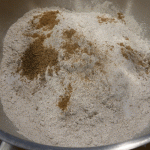 In the mixer bowl combine the dry ingredients
In the mixer bowl combine the dry ingredients
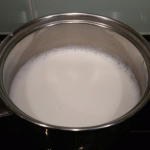 Warm the milk to 115°F/45°C and add to the dry ingredients
Warm the milk to 115°F/45°C and add to the dry ingredients
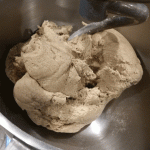 Use the dough hook to mix until the dough, which will be very firm and not at all sticky, leaves the sides of the bowl.
Use the dough hook to mix until the dough, which will be very firm and not at all sticky, leaves the sides of the bowl.
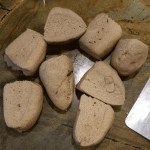 Transfer the dough to a work surface and divide it into eight pieces, each weighing approximately6½ oz./190 g.
Transfer the dough to a work surface and divide it into eight pieces, each weighing approximately6½ oz./190 g.
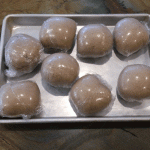 Shape each piece into a ball, wrap in plastic and refrigerate for 2-2½ hours. The dough will have begun to visibly swell.
Shape each piece into a ball, wrap in plastic and refrigerate for 2-2½ hours. The dough will have begun to visibly swell.
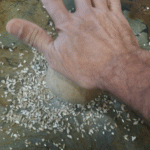 Spread the work surface with coarse rye meal and use your hand to flatten each piece into a thick disc.
Spread the work surface with coarse rye meal and use your hand to flatten each piece into a thick disc.
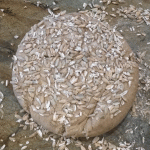 Make sure that both sides are well coated with the rye meal.
Make sure that both sides are well coated with the rye meal.
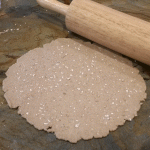 Use a rolling pin to roll the dough into a round approximately 12 inches/30 cm. in diameter and no more than ⅛ inch/0.3 cm thick.
Use a rolling pin to roll the dough into a round approximately 12 inches/30 cm. in diameter and no more than ⅛ inch/0.3 cm thick.
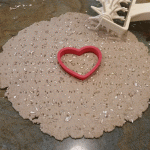 Use a fork, chopstick or docking wheel to dock the dough thoroughly and punch out a heart or circle shape in the center. Place the dough on a lightly floured peel, if using a baking stone, or on a parchment-lined sheet pan.
Use a fork, chopstick or docking wheel to dock the dough thoroughly and punch out a heart or circle shape in the center. Place the dough on a lightly floured peel, if using a baking stone, or on a parchment-lined sheet pan.
Preheat the oven to 350°F/180°C with the baking surface in the upper third. Bake for 12-14 minutes, then use a broomstick or dowel to hang the breads until they’re completely dry, 24-36 hours.

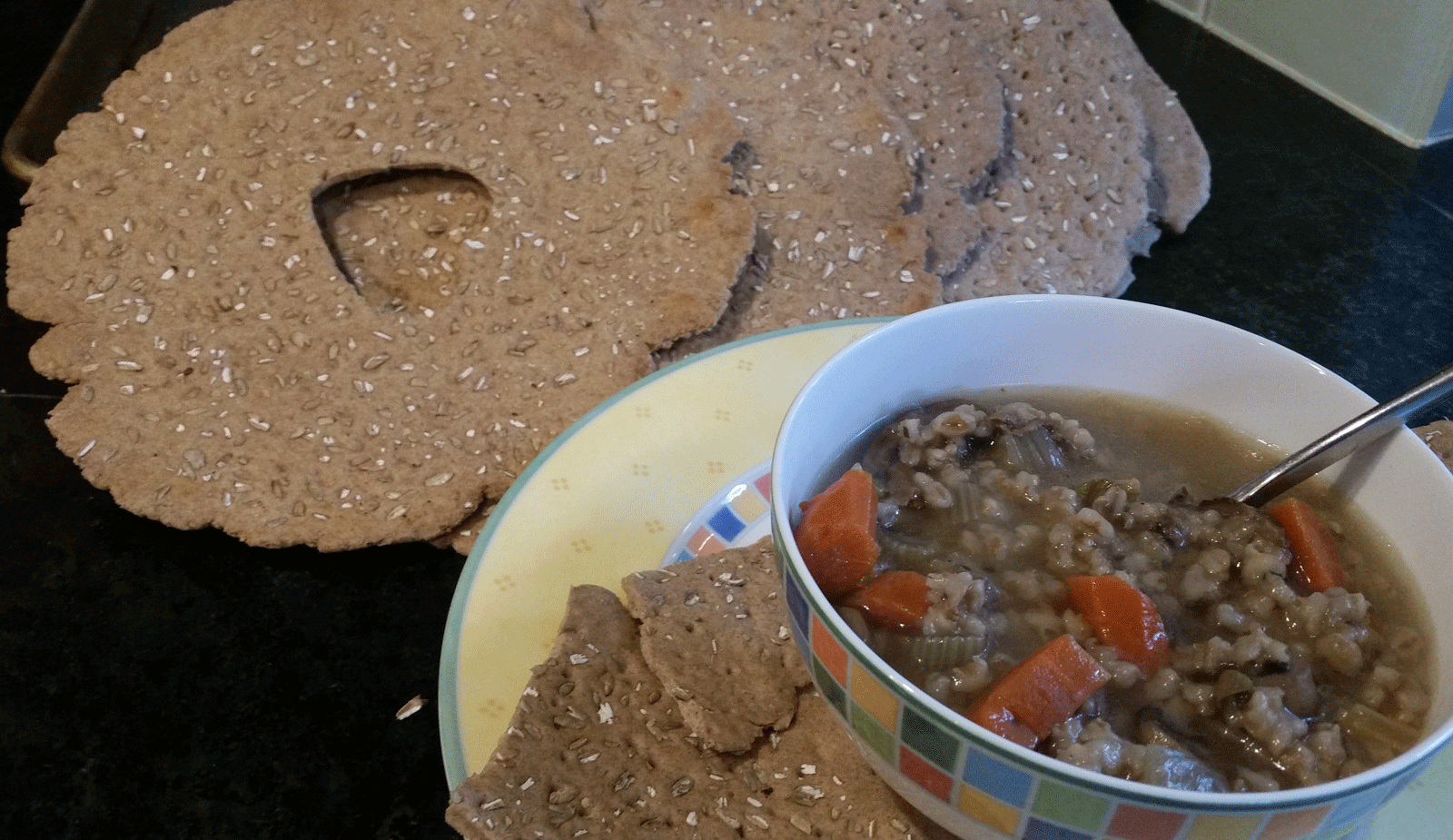
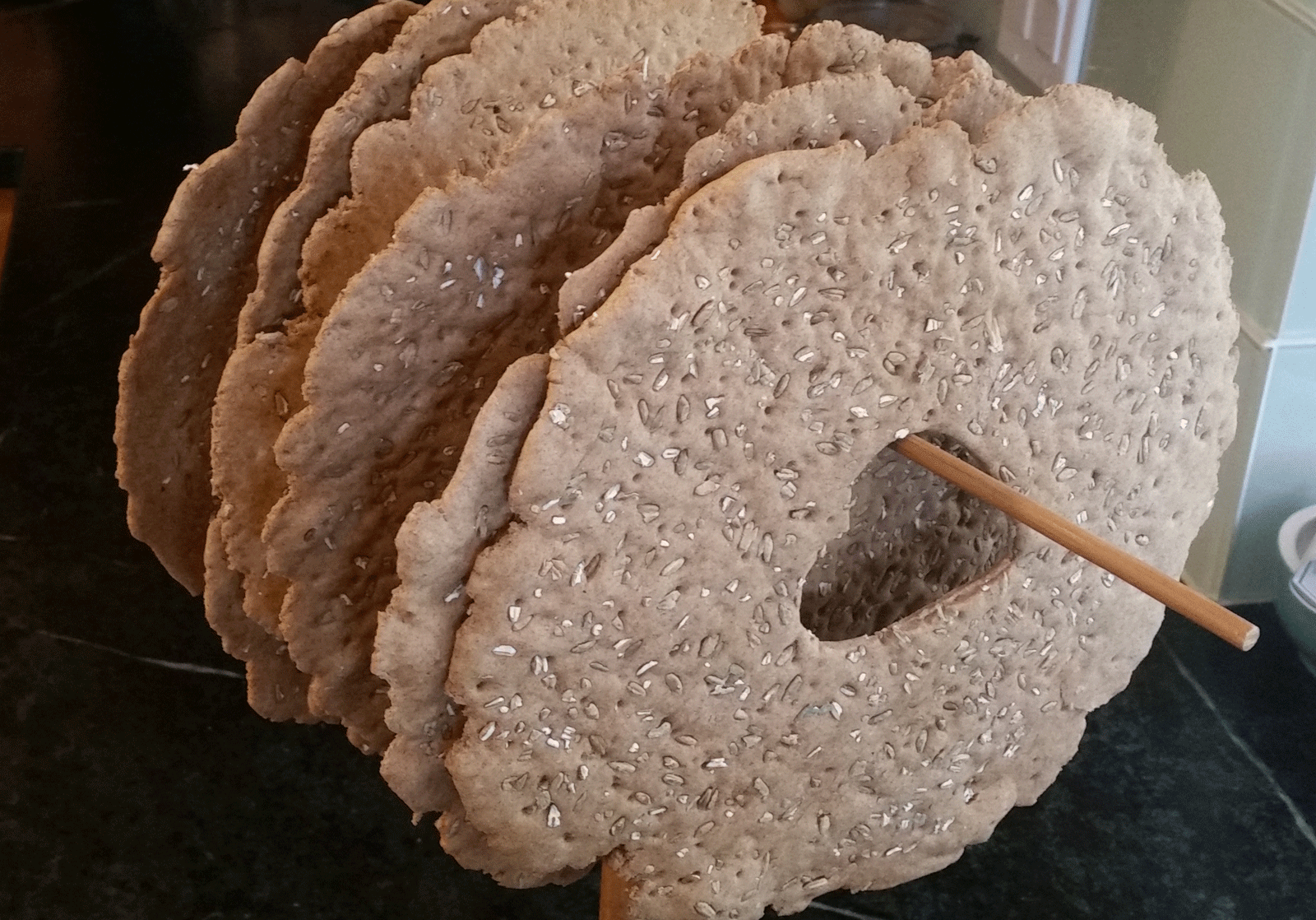
margot
December 18, 2016do you think one could use a sourdough levain instead of yeast?
Stanley Ginsberg
December 18, 2016I see no reason why not. In that case, though, I’d let the dough ferment at room temperature for 1-2 hours, until it’s visibly expanded, as in the photo. Also expect more acid in the flavor profile. Let us know how it turns out!
Beth
December 18, 2016I have just finished baking one half batch of this, having substituted reconstituted powdered buttermilk for the whole milk and coarsely-ground rolled oats for the rye meal. The breads were baked on a thoroughly-preheated baking stone. I’m quite pleased with the result! we are serving this today with a spicy roasted butternut squash soup. I will certainly make this cracker bread again.
Carl
January 12, 2017I just made a half recipe of this. It was great but a little hard. I wonder if they are supposed to be as hard as they turned out or whether I did something wrong. Very tasty! I am looking forward to adding nigella seeds to the coarse rye on my next try.
If this dough is not docked will it puff like a pita? Soon I will try to bake some pieces without docking. Is there any tradition of a rye version of carta di musica?
Stanley Ginsberg
January 12, 2017It is indeed a hard, dense bread — a real workout for the jaw muscles. Docking may open the crumb up a bit, but isn’t likely to soften it any, since the dough’s composition doesn’t change. Interestingly, this bread is a real throwback to traditional breads of northern Scandinavia, where water-powered mills meant that milling/baking generally only took place twice a year — during the spring thaws and autumn rains. Baking lasted for weeks and the loaves had to last for months. Breads from these regions typically had a hole in the center so they could be stored on poles suspended from the ceiling, and after a week or two, were eaten hard. In fact, one source I encountered while writing The Rye Baker described how, in northern Finland, the bread got so hard that it had to be sliced with a wood plane.
As for a Nordic equivalent to carta di musica, there’s obviously a well-established crispbread tradition in the Nordic countries, but also a tradition of soft flatbreads, both wheat- and rye-based, such as the Dunbröd (thin bread) of Sweden, Icelandic Flatbrauð and Norwegian Lefse. I include a recipe for rye Flatbrauð in The Rye Baker.
Carl
January 22, 2017I have made these twice now since my question above and we now have a horizontal stick in our kitchen where the most recent ones are hanging. The others are long gone. Since the holidays are over I have been using water instead of milk and leaving out the spices. My wife gave me a Swedish deep notched rolling pin which has permitted me to roll them incredibly thin while docking them. They are crispy and delicious with pickled herring. I asked some of the older members of my family if their mothers had ever made knäckebröd when they were little. They did not remember knäckebröd but they each mentioned rye rusks. I found a recipe in an old Swedish-American cookbook but I wonder if you have experience making rye rusks. Do you know of a good recipe?
Thank you again.
Stanley Ginsberg
January 22, 2017I have a Finnish recipe for rye rusks and you’ve just helped me decide on my next bake!
Anders Svensson
October 28, 2018Hi! I love ‘knäckebröd’ and you should make the really, really thin and preferably use a ‘kruskavel’ to make small holes in the bread. Happy knäckebröd- making 🙂
// Anders Svensson, Sweden
link to ‘kruskavel’:
https://www.ahlens.se/Inredning/kok/koksredskap-15034/ahlens-kruskavel-i-tra-25-cm-ljusbeige-43681527/
Björn
May 6, 2020I’m in a bit of a baking streak and just found your homepage- really nice and informative with a lot of recipes I’d like to try, for example this one. I’m curious about the cumin since that is traditionally a rather uncommon flavoring in Swedish bread? The Swedish word ”kummin” is caraway seeds while ”spiskummin” is cumin and those terms are frequently mixed up when translating from English to Swedish, could that be the case here also?
Stanley Ginsberg
May 6, 2020Very likely. Same in Slavic languages, where “tmin” is caraway.
Lena
May 17, 2020I haven’t tried you recipe yet but I do make Swedish crisp bread from sourdough. I use Fennel seed and Anise seed in my bread.
My favorite Swedish crisp bread is just made with salt. (Swedish Rye Crispbreads Rounds by Leksands.)
To dry my bread I put the baked bread back in the oven on low temperature for a couple of hours.
I live in Missouri so it’s humid here. To keep my bread from going soft I put a silica gel bag in the zip lock bag with my bread. (One of those little bags you get when you buy things.)
It’s funny, Swedish crisp bread is the one thing I miss most when it comes to Swedish food since I moved to the US 19 years ago.